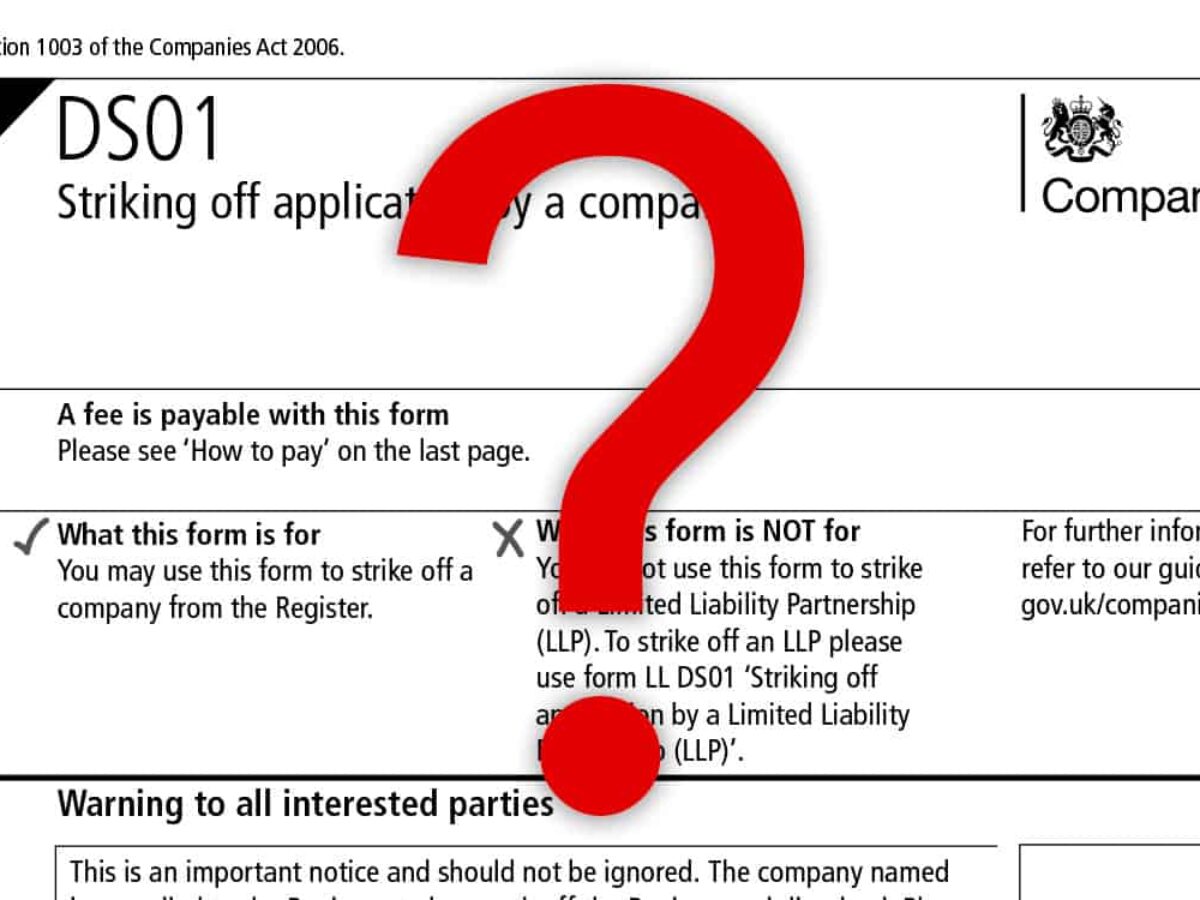Understanding Compulsory Strike Off: What You Required to Know
Understanding Compulsory Strike Off: What You Required to Know
Blog Article
A Comprehensive Guide to the Compulsory Strike Off Treatment in Corporate Administration
The mandatory strike off procedure, a crucial element in company governance, offers as a system to impose conformity and preserve the integrity of the service atmosphere. As organizations progress and situations adjustment, the requirement to strike off a firm might occur for different factors.
Factors for Compulsory Strike Off
What conditions lead to the need of a required strike off in corporate administration? There are several crucial reasons that may motivate the initiation of a mandatory strike off treatment for a company. One typical scenario is when a company falls short to adhere to its statutory commitments, such as submitting yearly returns or economic statements to the appropriate authorities. Non-compliance with governing requirements can increase worries concerning the company's procedures and economic health, bring about the decision to strike off the business from the register.
In addition, companies that have ceased trading or are no more lugging out any service tasks may likewise encounter mandatory strike off. This could be because of bankruptcy, mergers, or just a choice to wind up the business. In such instances, maintaining the business on the register would certainly serve no function and can possibly develop complication among stakeholders.
Inevitably, the necessity of a mandatory strike off in company governance emerges when a business is no more operating based on the law or has come to be obsolete, demanding its elimination from the official records.
Lawful Effects and Threats
Offered the scenarios that trigger a mandatory strike off in corporate governance, it is crucial to comprehend the legal implications and threats connected with such actions. When a company is struck off the main register, it disappears as a legal entity. This can have significant effects for shareholders, directors, and financial institutions. Supervisors might deal with personal liability for firm financial debts incurred after the dissolution, subjecting their possessions to potential seizure. Investors lose their investment in the company, and creditors might locate it challenging to recoup financial debts owed to them.
Furthermore, there are legal consequences for individuals included in the administration of a business that has been forcibly struck off. Additionally, the reputational damage from a mandatory strike off can have enduring impacts on individuals and their capability to engage in future business ventures.
Steps in the Strike Off Process
Initiating the required strike off procedure in corporate administration includes a series of recommended actions described by regulatory authorities. The primary step generally requires the firm to submit a formal application or notice to the appropriate government firm or registrar signaling its intent to be struck off the main register. Subsequently, the firm is typically required to settle any type of exceptional liabilities, financial debts, or taxes to ensure conformity with governing demands.
Once the preliminary paperwork is sent and financial commitments are satisfied, the regulatory body will certainly publish a notification in a comparable publication or the official gazette to notify stakeholders concerning the upcoming strike off. This notice acts as a final possibility for any type of interested events to increase arguments or present legitimate reasons the firm ought to not be liquified.
Complying with the magazine of the notice, the governing authority will wage the strike off process if no substantial objections or barriers arise. The company will then be officially liquified, and its name Continued will certainly be removed from the register, properly noting the conclusion of the obligatory strike off treatment in company governance.
Documents Needed for Strike Off
In compliance with governing guidelines, particular paperwork needs to be given to facilitate the strike off process in business governance. The needed papers typically include a formal application for strike off, which needs to be completed accurately and submitted to the relevant regulatory authority. Furthermore, monetary statements, such as the business's newest balance sheet, should be included to guarantee that all monetary responsibilities have been worked out before launching the strike off treatment. A statement of solvency or a declaration confirming that the business has no exceptional obligations is typically look what i found mandated to show that the entity can be liquified without triggering damage to its lenders. Additionally, any type of needed authorizations from investors or board participants must be documented and enclosed with the application. It is vital to make sure that all the requisite documents is meticulously ready and submitted in accordance with the suggested standards to speed up the strike off process properly. Failing to supply the required documentation might lead to delays or difficulties in the dissolution of the business.
Post-Strike Off Responsibilities and Factors To Consider

One more crucial post-strike off factor to consider is the possibility for the firm to be restored to the register. If there is a need to revive the business after strike off, the process for repair need to be carefully followed to ensure compliance with legal requirements.
Conclusion

There are several crucial reasons that might motivate the initiation of an obligatory strike off treatment for a business. Non-compliance with governing requirements can elevate concerns regarding the firm's operations and economic health, leading to the decision to strike off the firm from the register.
Additionally, business that have actually ceased trading or are no much longer lugging out any organization activities may additionally face obligatory strike off. If there is a need to restore the company after strike off, the process for restoration need to be thoroughly complied with to make certain conformity with lawful demands.In conclusion, the required strike off procedure in business administration serves as an essential system to get rid of obsolete business from the register.
Report this page